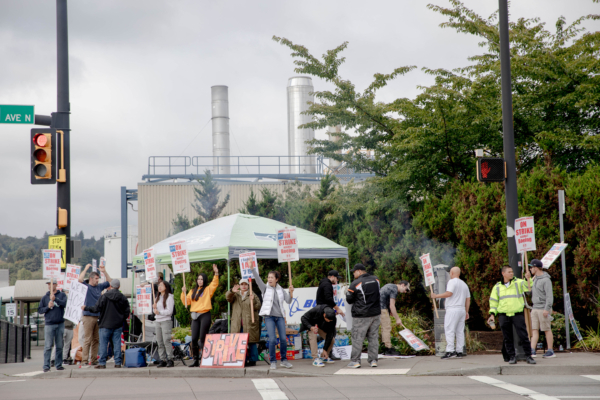Boeing Labor Negotiations Stuck in Deadlock
Boeing Company announced on Wednesday, September 18th, that in order to cut costs, tens of thousands of employees will be put on rotating unpaid leave.
Around 30,000 Boeing employees have been on strike since last Friday, resulting in a halt in production of the company’s best-selling 737 MAX and other aircraft.
According to Reuters, Boeing CEO Kelly Ortberg announced that during the strike, some employees will be placed on temporary furlough.
In an email to employees, CEO Kelly Ortberg said, “We will be initiating a temporary furlough in the coming days which will impact senior executives, managers, and staff in the U.S… During the strike, we plan to have certain employees on a one-week rotating furlough every four weeks.”
Ortberg also stated that he and other Boeing executives “will take corresponding pay cuts” during the strike.
Boeing has been in negotiations with the International Association of Machinists and Aerospace Workers (IAM) under the auspice of a federal mediator for two days. IAM reported on Tuesday that the first day of mediation was unsuccessful. By Wednesday evening, the union indicated that “no substantive progress had been made” at the end of the second day of talks.
“While we remain open to further discussions, no dates for additional talks have been confirmed, either directly or through mediation,” the union stated. “We will continue to fight for what our members deserve.”
Boeing did not immediately respond to Reuters’ request for comment on IAM’s statement.
The widespread furloughs indicate that Ortberg is preparing for a prolonged strike.
Analysts believe that a protracted labor dispute could cost Boeing billions of dollars, further burdening its finances and threatening its credit rating.
Ben Tsocanos, Director of Aerospace at S&P Global Ratings in New York, stated, “Pay cuts cannot entirely offset the costs of a long-term strike.”
In the first comprehensive labor negotiations between IAM and Boeing in sixteen years, IAM has been pushing for a 40% wage increase over four years, well above Boeing’s proposed 25%, which was rejected.
IAM International President Brian Bryant stated, “This is just part of their [Boeing’s] plan to make it look like they’re trying to save money.”
Ortberg mentioned in the email to employees that the company will not take any actions “that would suppress our ability to fully recover in the future,” and that “all activities critical to our safety, quality, customer support, and key certification programs, including the production of the 787 aircraft, will be prioritized and continue.”
Boeing employs approximately 150,000 people in the U.S. It is currently unclear which employees will be affected by the furloughs. A union representing Boeing engineers stated that their members will not be impacted.
The strike has led to the halt in production of Boeing 737 MAX narrow-body planes, as well as 777 and 767 wide-body planes, delaying deliveries to airlines.
However, a major Chinese leasing company announced on Wednesday that it has reordered 50 MAX jets, to be delivered between 2028 and 2031. This indicates that the long-term demand for Boeing aircraft remains unchanged.
Boeing stated on Monday that due to the company’s $60 billion debt, it is halting new hires to cut costs.
The strike has been ongoing for six days, putting Boeing’s extensive supplier network at risk. Several suppliers have indicated to Reuters that they are also considering furloughs.
Apart from the Dreamliner 787, Boeing is suspending most of its parts orders for all Boeing aircraft programs.
Nikki Malcolm, Executive Director of the Pacific Northwest Aerospace Alliance, stated, “If this [strike] goes on for a long time, it will have a significant impact on suppliers.”
So far this year, Boeing’s stock price has dropped by approximately 40%.

